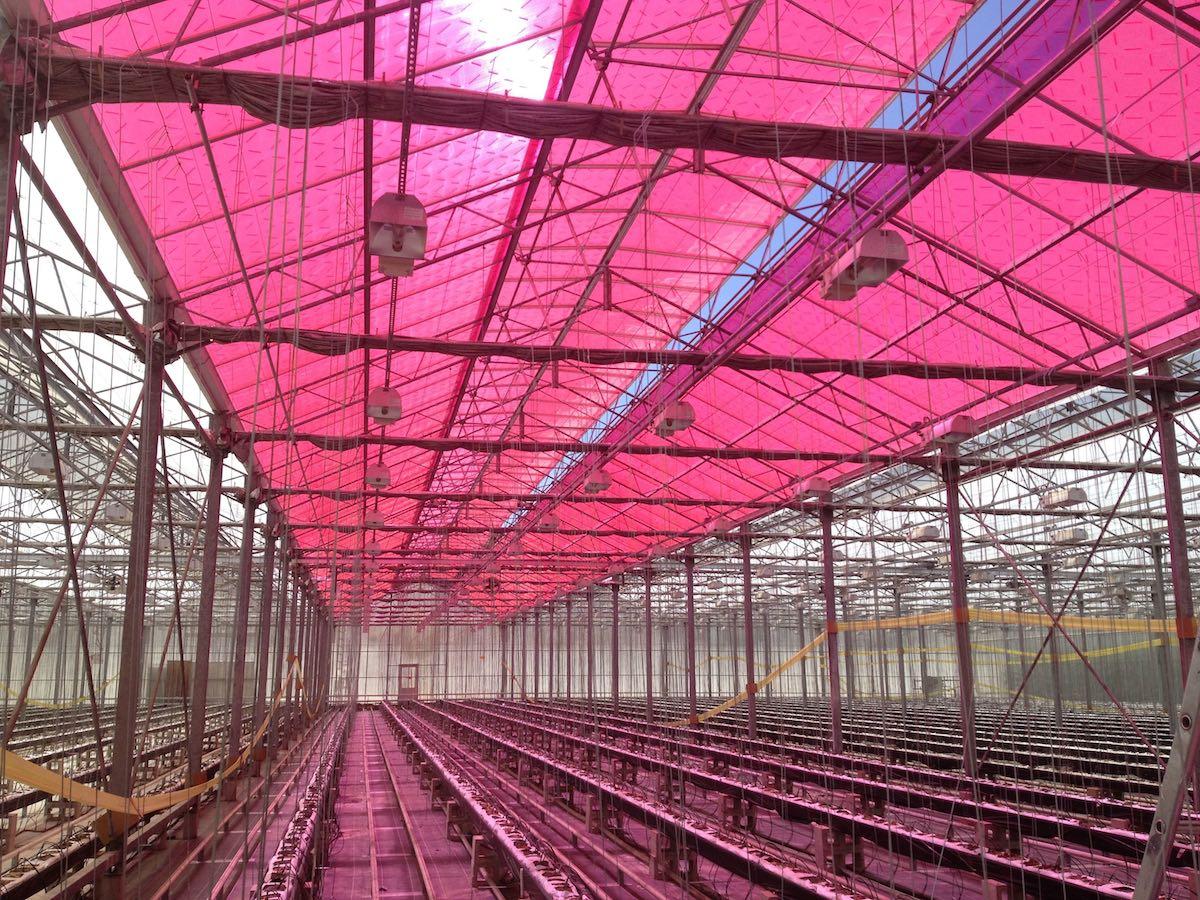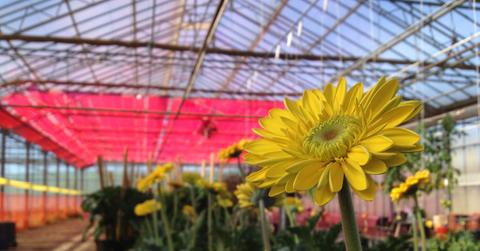These Smart Greenhouses Produce Clean Energy And Sustainable Food
Innovative new solar panels that can collect the sun's energy and still let the light pass through are creating smart solar greenhouses that actually boost plant productivity.
Updated May 17 2019, 1:07 p.m. ET
The roof of a greenhouse might seem like a good place to lay some solar panels, but there's just one issue: they would block the sun. OK, maybe that's obvious. But for a group of researchers from UC Santa Cruz, it was just a problem that needed to be solved. Now, they've come up with an innovative new solar panel that can collect the sun's energy and still let the light pass through.
Called Soliculture LUMO panels, the panels generate electricity efficiently and at a lower cost than conventional panels. A recent study also showed that not only do the panels not negatively affect crop growth inside the greenhouse, they actually boost yields in some plants. In addition to collecting solar power, the LUMO panels use a light-altering dye that changes the color of the light that passes through to help optimize photosynthesis in the plants beneath them.

The greenhouses look pretty cool inside, too. The panels turn the light a magenta color due to narrow photovoltaic strips that are embedded in a "bright magenta luminescent dye," which absorb some of the sunlight's blue and green wavelengths and convert some of the green light into red. And right light is what plants like: it has the highest efficiency for photosynthesis in plants, according to Soliculture.
Additionally, use of the panels cost about 65 cents per watt—or 40 percent less than conventional solar panels—and the plants underneath require less water to grow, creating all-around efficiency.
Michael Loik, professor of environmental studies at UC Santa Cruz, called the innovative solar panels "a new wedge for decarbonizing the food system" in a paper for the science journal Earth's Future. In it, Loik concludes that the panels "should help facilitate development of smart greenhouses that maximize energy and water use efficiency while growing food."
For the study, a research team monitored the rate of photosynthesis and fruit production in 20 varieties of plants, which included tomatoes, cucumbers, strawberries, peppers, basil, lemons and limes. According to the study, 80 percent of the first crops grown in the solar greenhouses weren't affected at all by the changed light. The other 20 percent "actually grew better."
Though greenhouses are not thought of as carbon-producing, electricity-using tools, in actuality they are. Though the glass does a lot of the work to produce light and warmth, many greenhouses are rigged with fans and ventilation systems, as well as automatic irrigation systems, monitoring equipment and more. Industrial-sized greenhouse grows are also rising in popularity, adding more of our food to the grid. Solar-powered greenhouses could change all that.
"We have demonstrated that 'smart greenhouses' can capture solar energy for electricity without reducing plant growth, which is pretty exciting," Loik wrote.
